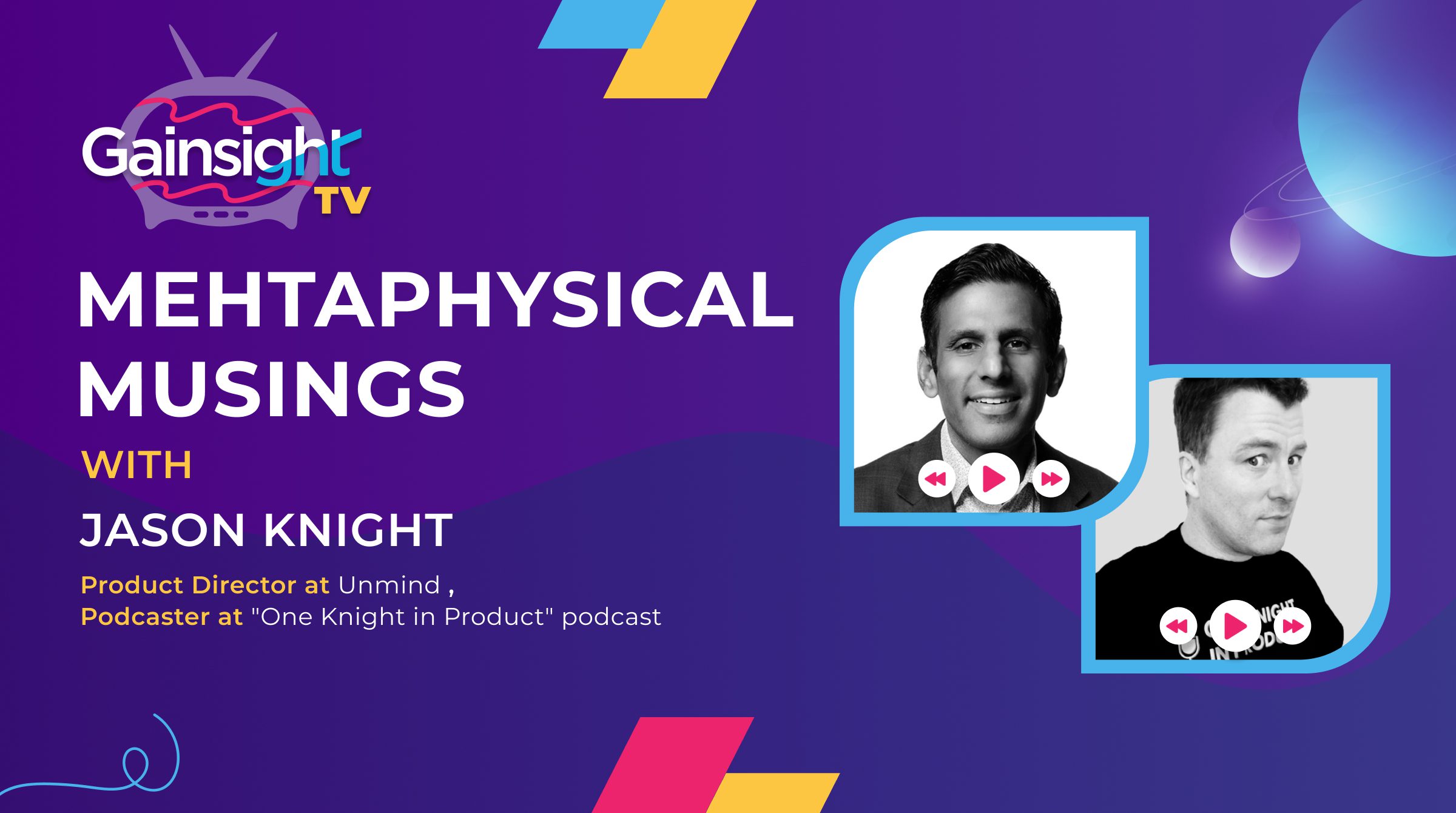On the latest Mehtaphysical Musings, I talked with Jason Knight about the world of product, how it’s evolving, and how we talk about product management to those inside and outside the tech field.
Knight is Director of Product at Unmind, a cultural change platform that helps people flourish at work by giving leaders expert mental health and well-being tools. On the side, Knight is the host of the extremely popular (and brilliantly named) podcast One Knight in Product.
We discussed how to explain your product job to family and friends, what’s behind the PLG buzz, fostering diversity in product—and our shared love of memes. Watch the entire episode or read my key takeaways below.
Success as a product manager looks different for everyone
A common theme in the Mehtaphysical Musings conversations is the wandering path many successful Product Managers take to get to where they are at today. And it makes sense. A role that requires a deep understanding of various stakeholders would attract people who have tried a bit of everything.
Knight is no different. He mentioned that “It’s definitely been an interesting journey learning how to make software, then learning why to make software, and then laterally trying to work out a lot more around like, well, actually how to be a proper strategic product leader, rather than being someone who’s a really good contributor.”
As I think about the ways that PMs will impact revenue, growth, and innovation in the future, it’s clear how shifting the mindset away from contributions and towards strategic leadership made Knight such a successful and influential voice in the space.
Product-led growth is not just a buzzword
Everyone in SaaS is talking about product-led growth (PLG) and many are still trying to figure out how to turn it into practical, successful strategies. Gainsight recently did a Product-Led Growth Index Survey and discovered that 42% of companies aren’t doing PLG because their product isn’t ready.
What does PLG readiness really mean?
Knight said, “In the classic sense, you need to have a product you are happy with and willing to put in front of people without being there next to them or having to show them a video first…. There is a continuum and stages you can take. But it’s not just about your product. It’s about your company, your ideal customer profile, and the market you’re going after.”
We agreed that while everyone needs to think about PLG in some dimension, it’s more of a continuum than a light switch. So even if you think that your organization is not ready for a sophisticated PLG initiative, you should still think about ways you can get started. As Knight said, “Ultimately, people are going to start to have higher expectations. People are seeing new software all the time, and they’re interacting with more and more complicated software all the time. If we don’t make our software better, even if we still need a salesperson to sign the deal, then someone’s going to eventually come and take our lunch.”
At Gainsight we believe in helping all customers start where they’re at—that includes their PLG motions.
PLG and Sales: Different lenses, same goal
In some ways, PLG is a response to traditional sales-led growth, which has inherent challenges. The traditional approach can be high touch and high friction, especially in scenarios where a “lone wolf” salesperson promises anything to win a deal. But while tension exists between product and sales, Knight emphasized it is possible to bridge the gap.
He shared a story about a discussion with a senior sales account lead who just couldn’t understand why Knight pushed back about certain things and what the encounter taught him. In short: he realized that neither of them was right or wrong; they were simply looking through different lenses. Salespeople see the world in terms of what’s right for a specific prospect, while PMs are going after a market and trying to make the best decision for the many.
Knight commented, “There’s a lot of work to do there, and I try to help to bridge that gap. It’s just a fundamental difference in the way many salespeople and product people see the world.”
Managing tension between PMs and developers
Another place tension commonly appears is between developers and PMs, which Knight wrote about in his post The Disappointing Tension Between Some Developers and Some Product Managers. Some fundamentalist, agile XP developers are all about the code and don’t see the purpose of having PMs.
As with sales, Knight sees this as a bridgeable gap and one that can be resolved at a company level. Some companies have systems and environments that cause inherent friction, but it’s more productive to take a values-driven approach and assume positive intent, encouraging collaboration and awareness that all roles are important.
I couldn’t agree with him more. At Gainsight, we’re big believers in fostering inclusion. Product management is a really complex job, so the more diversity of perspectives a PM has, the more successful they’ll be.

